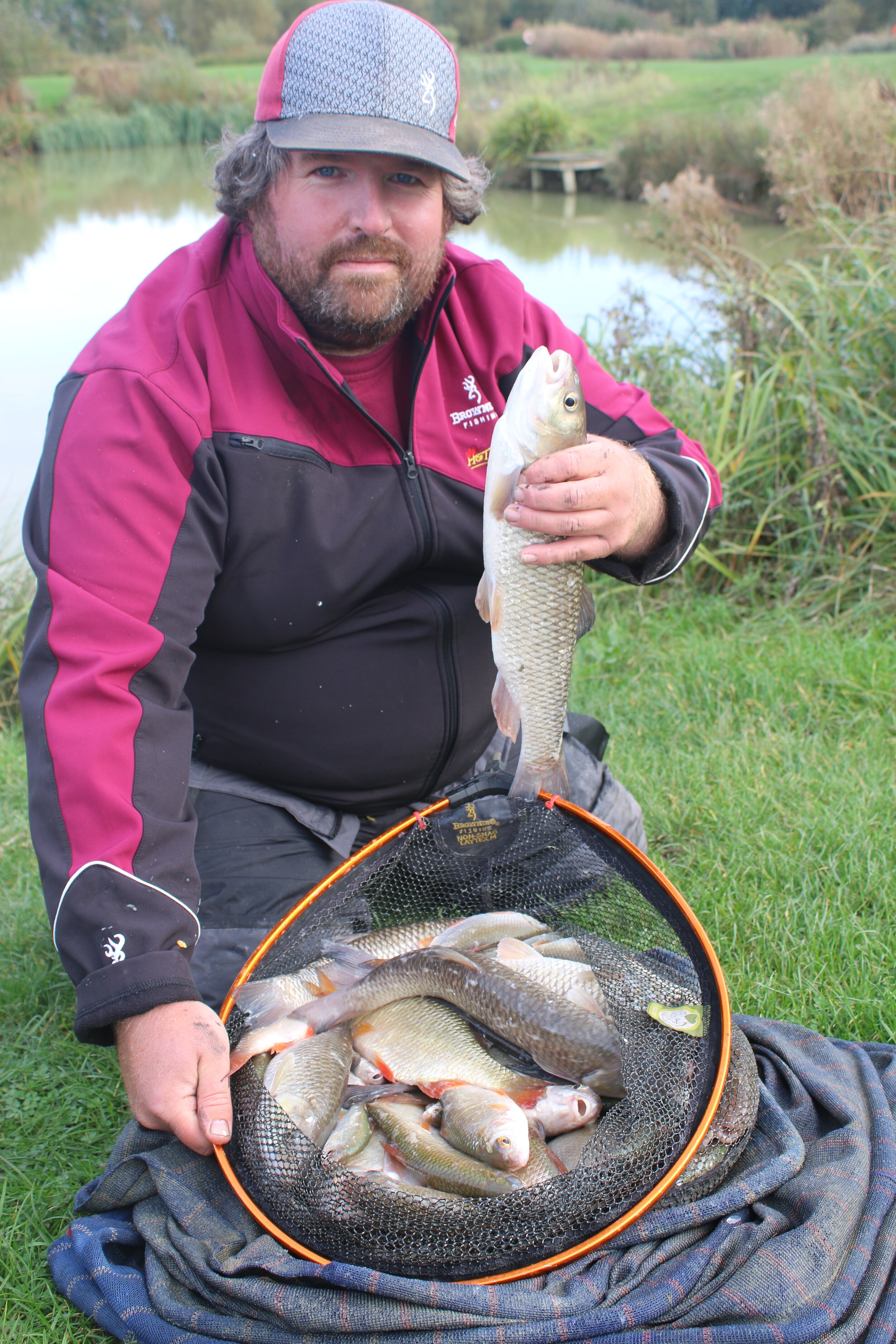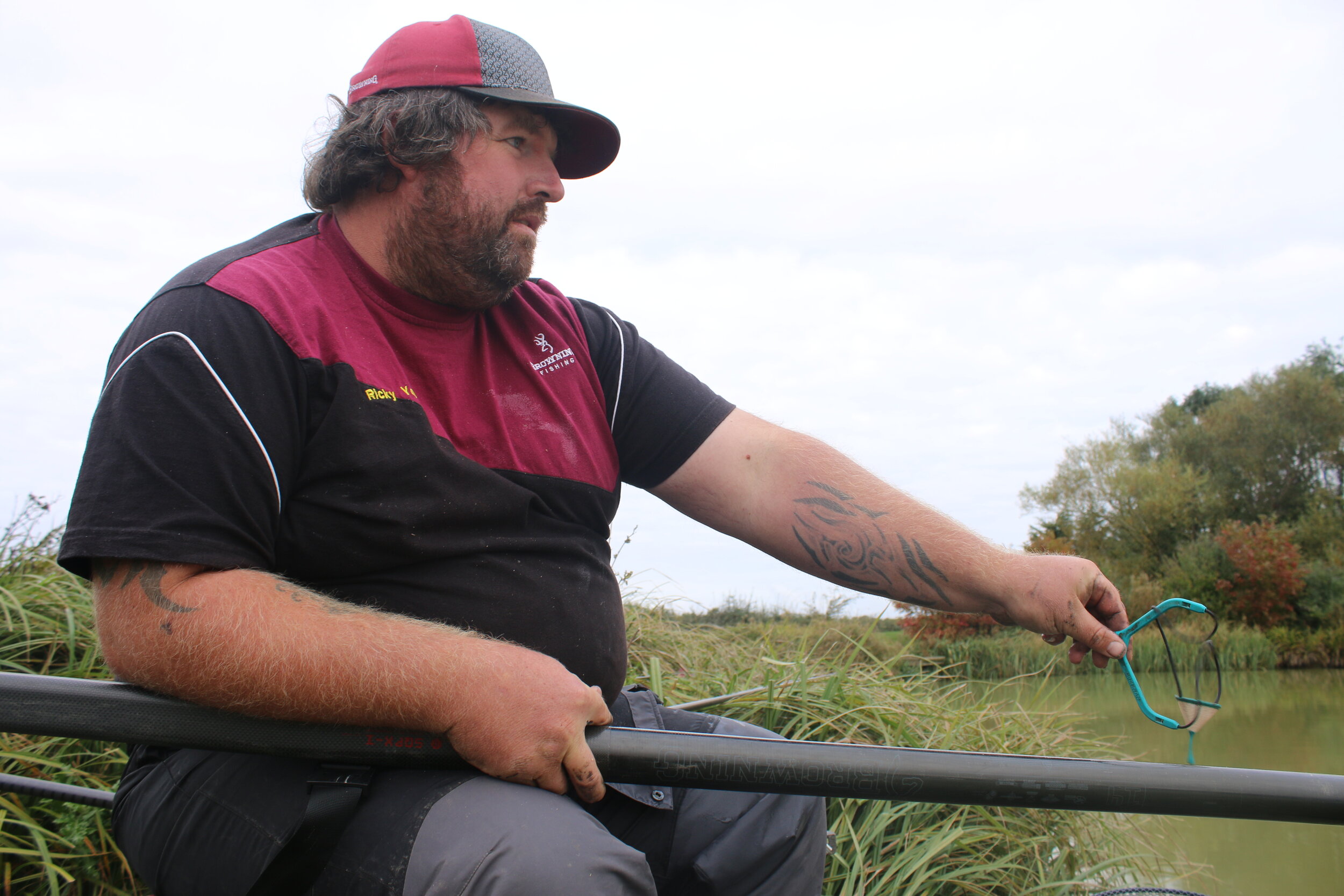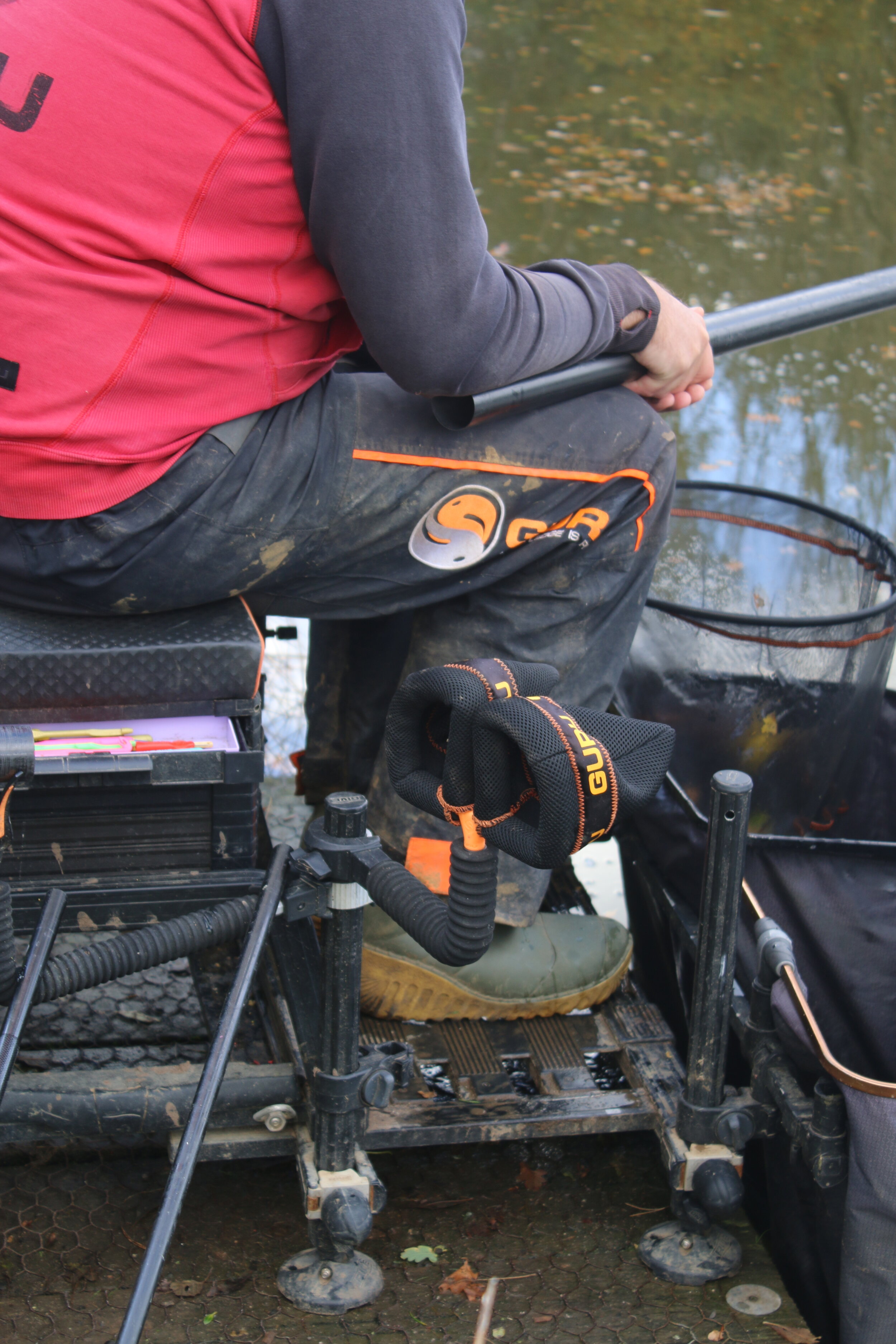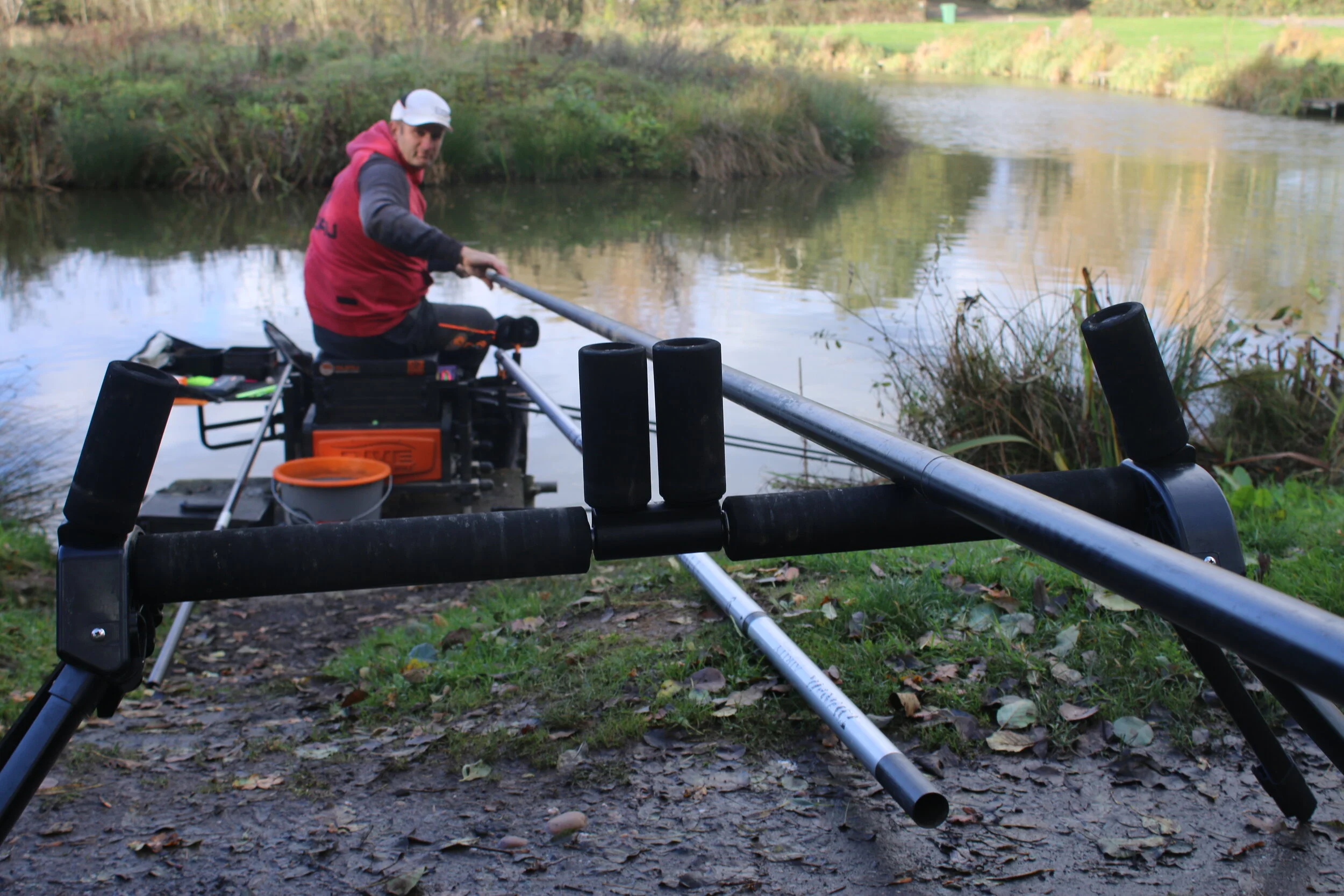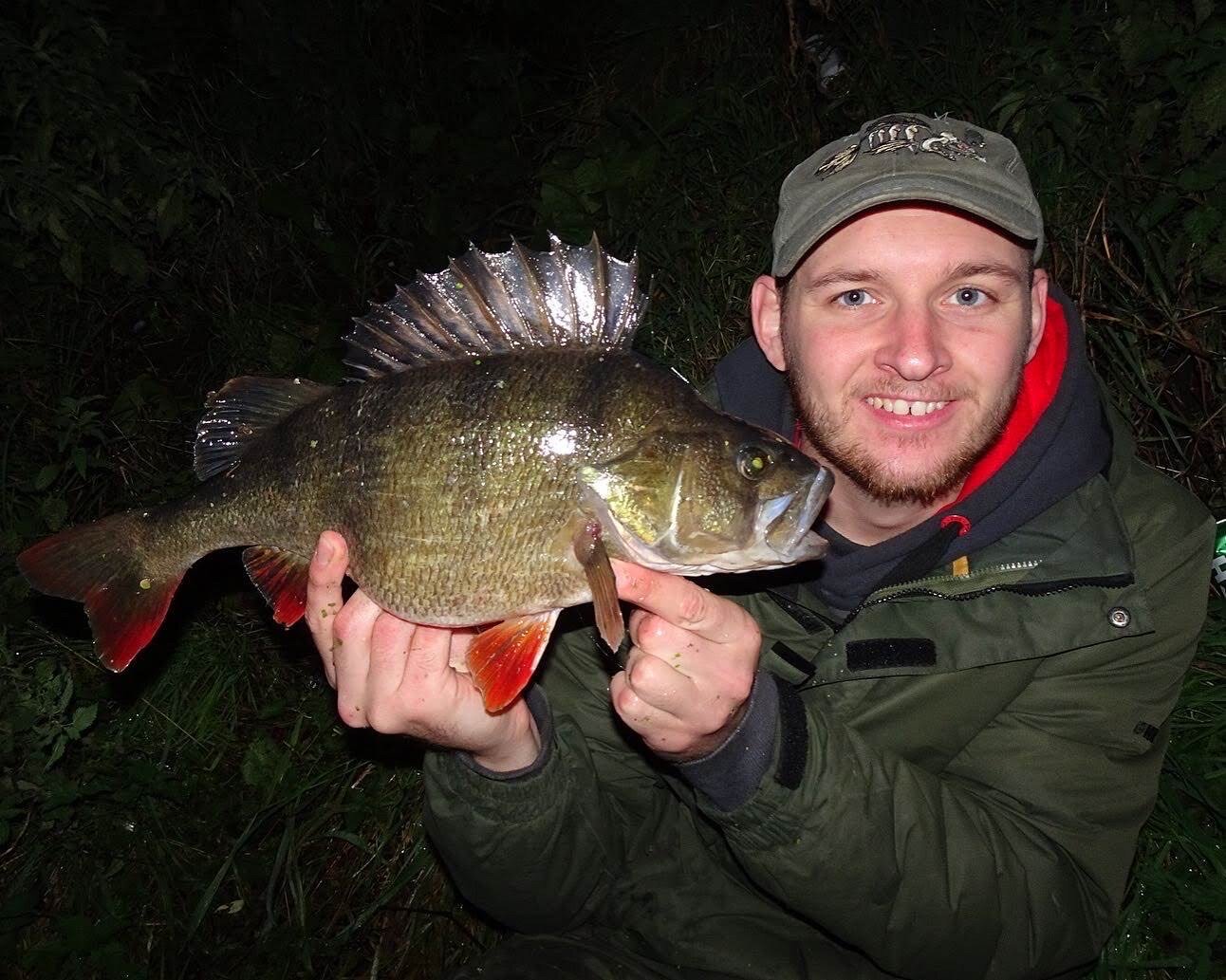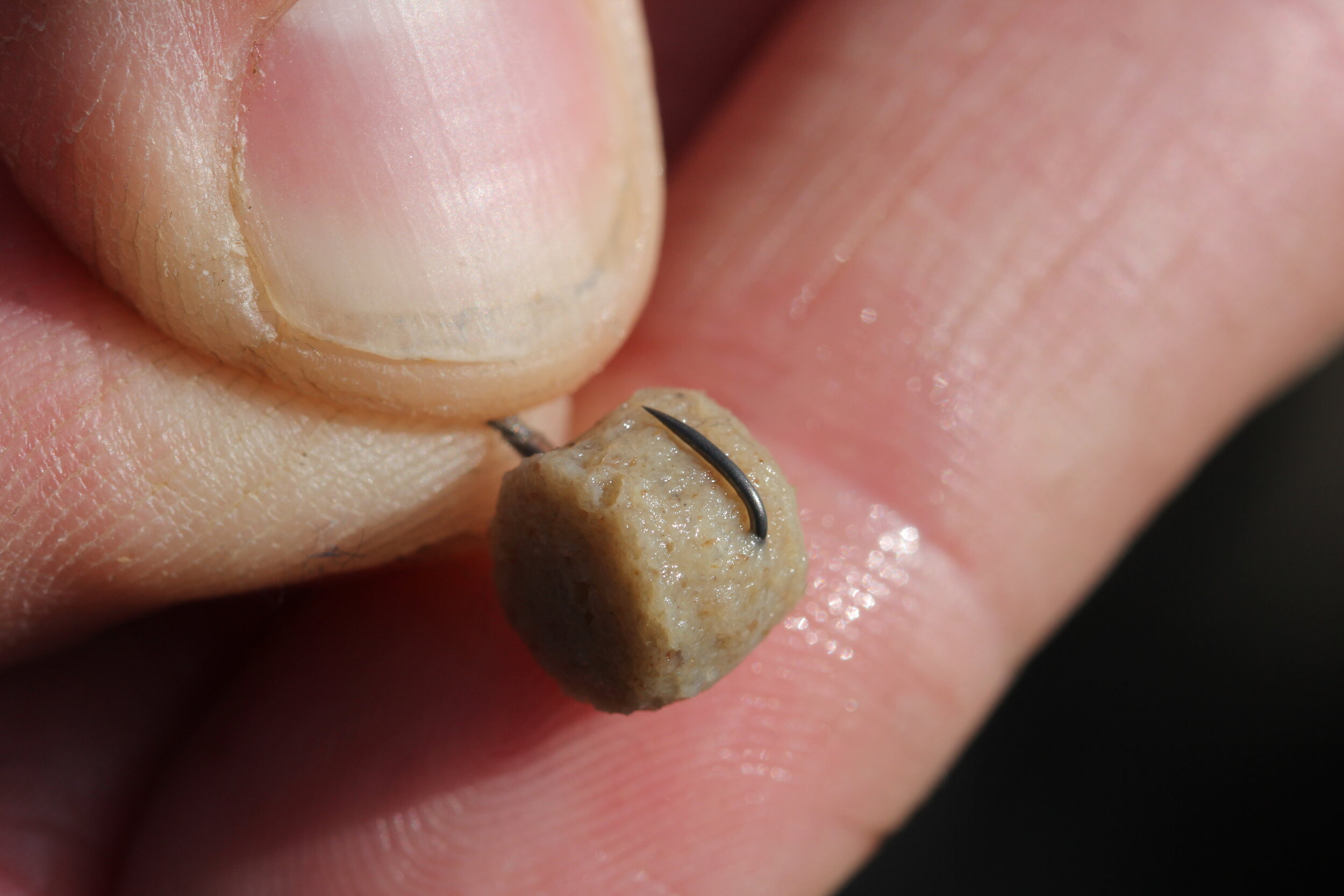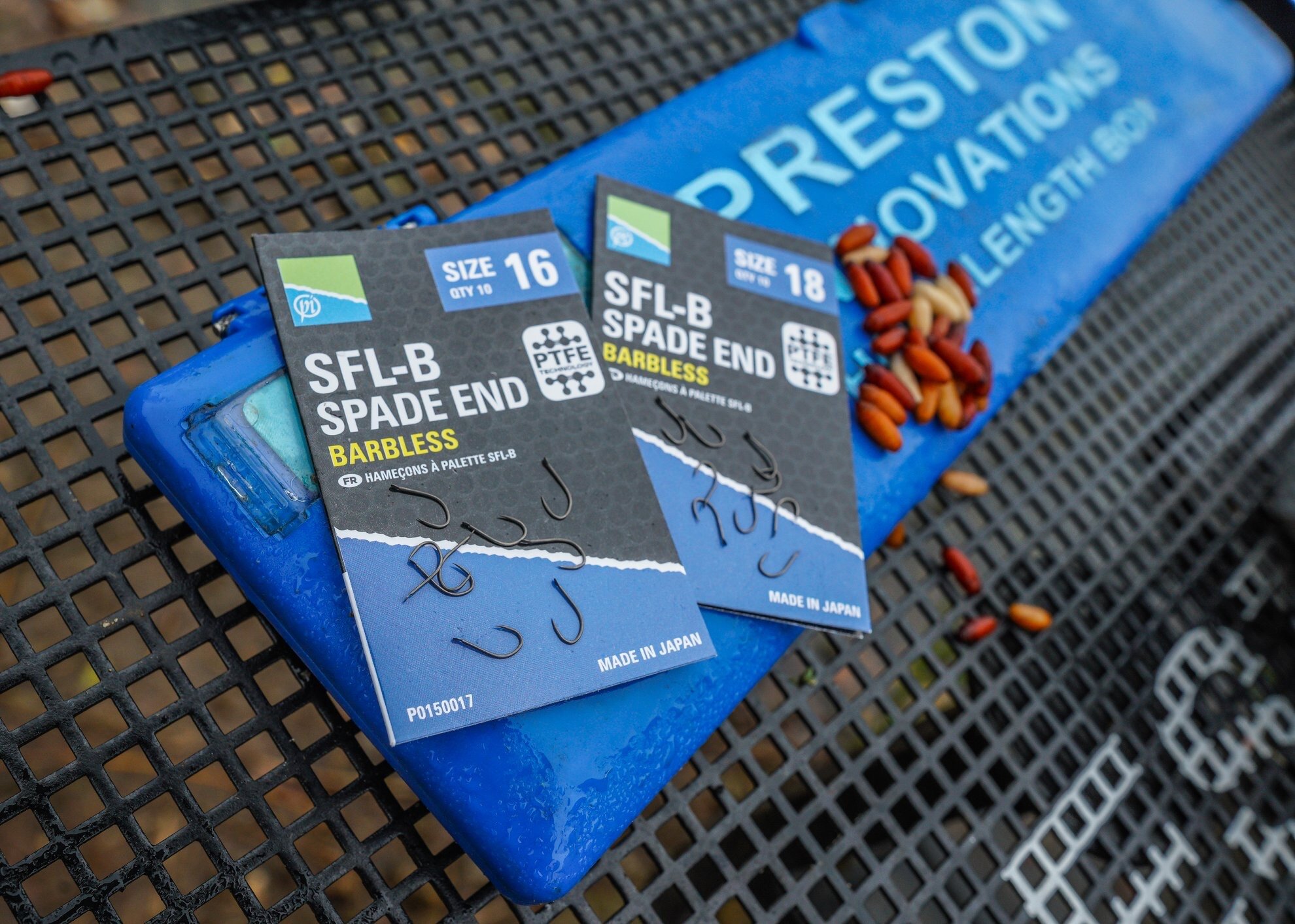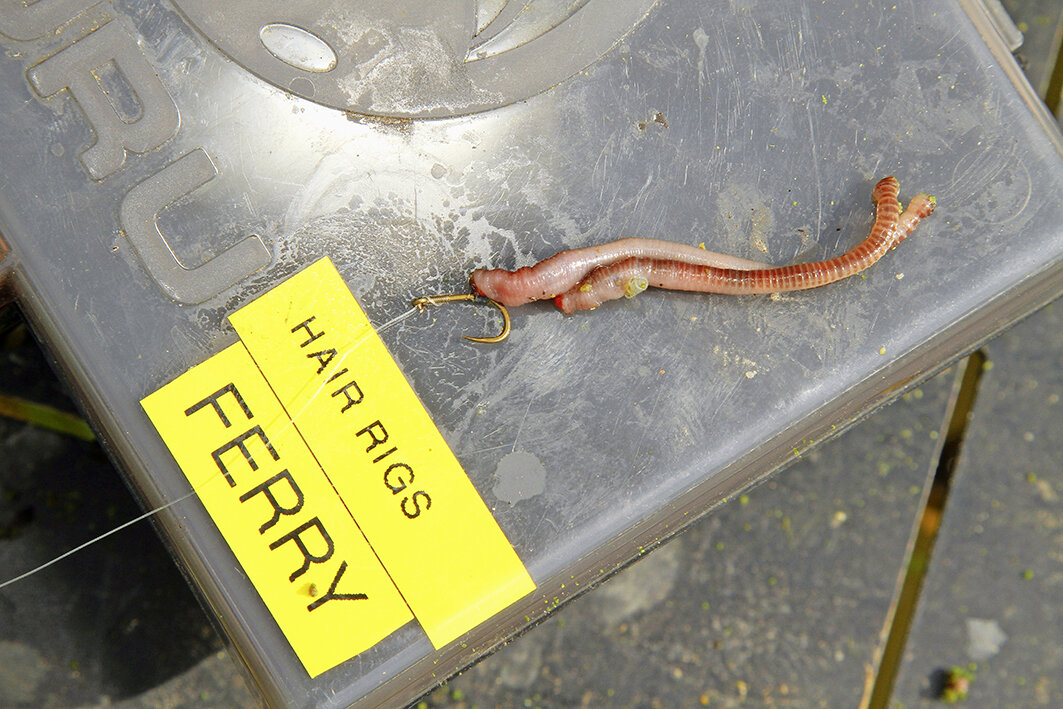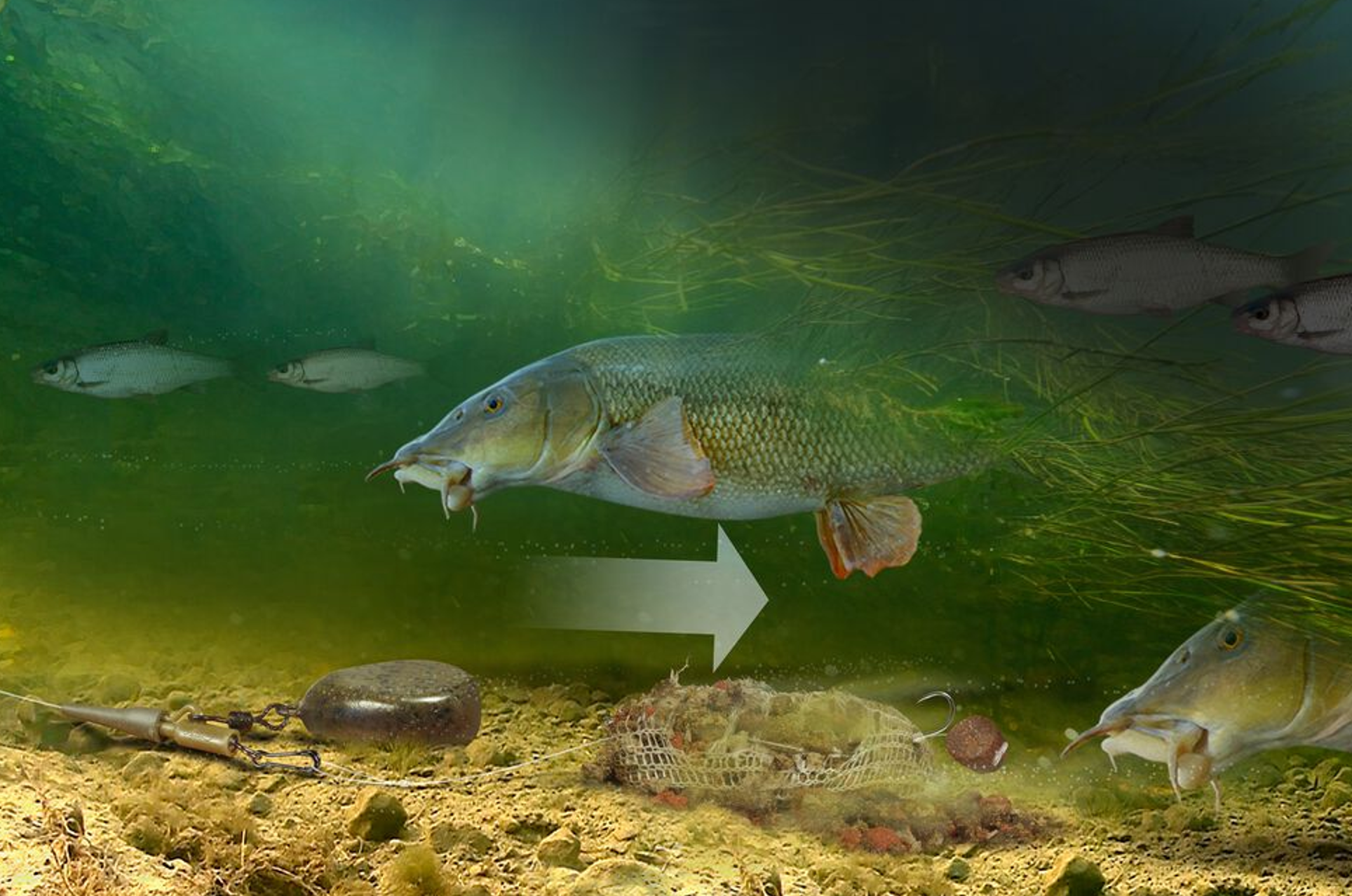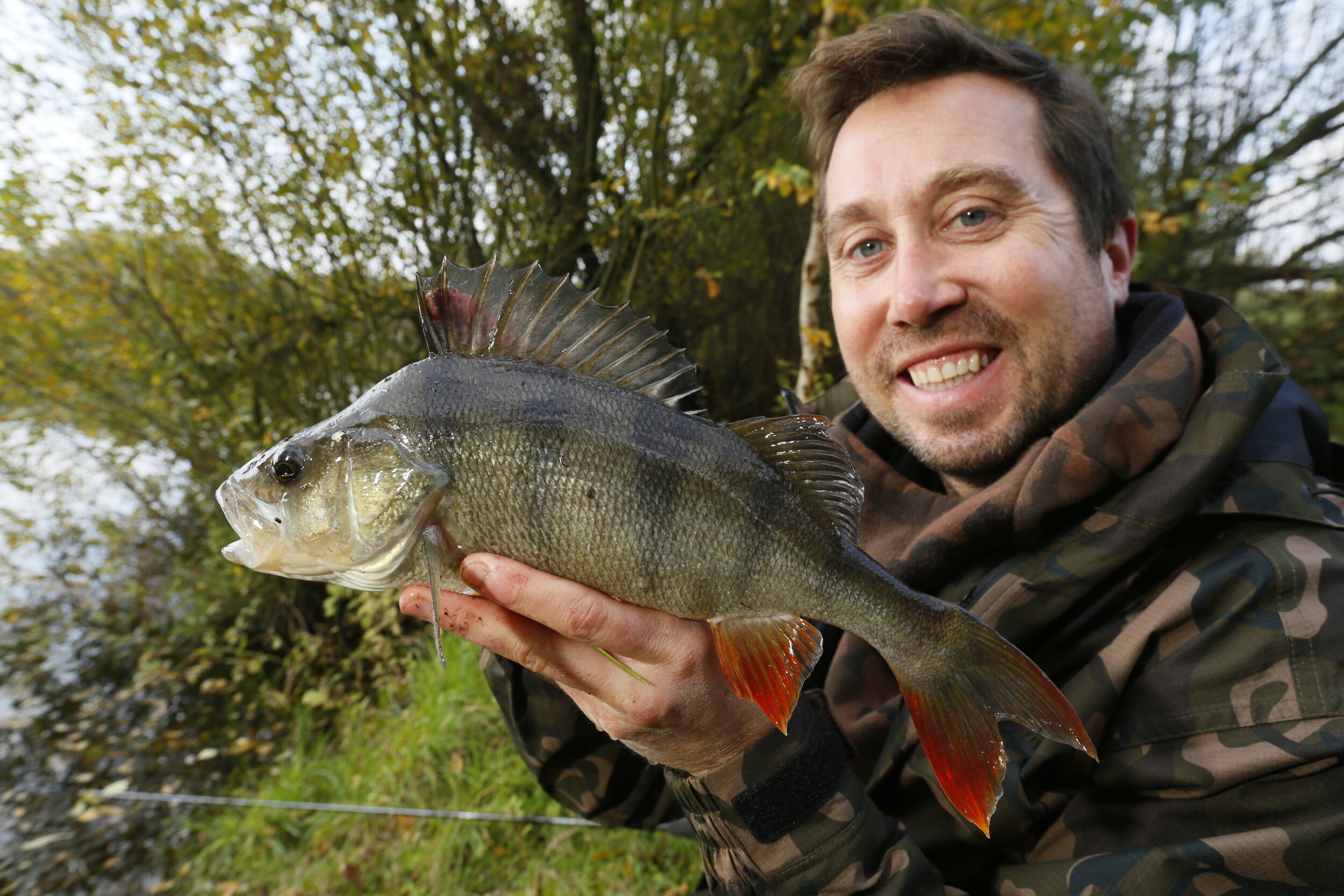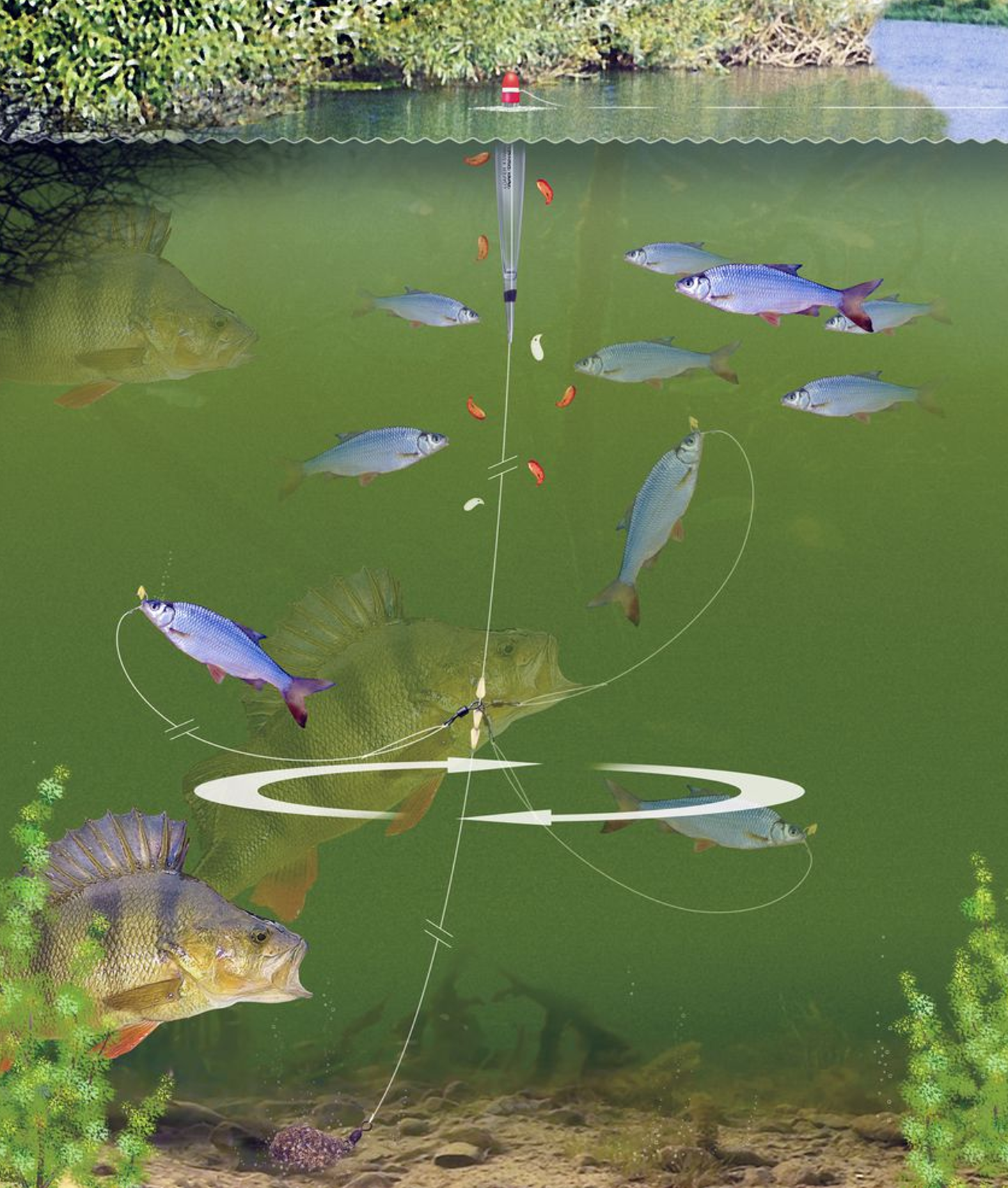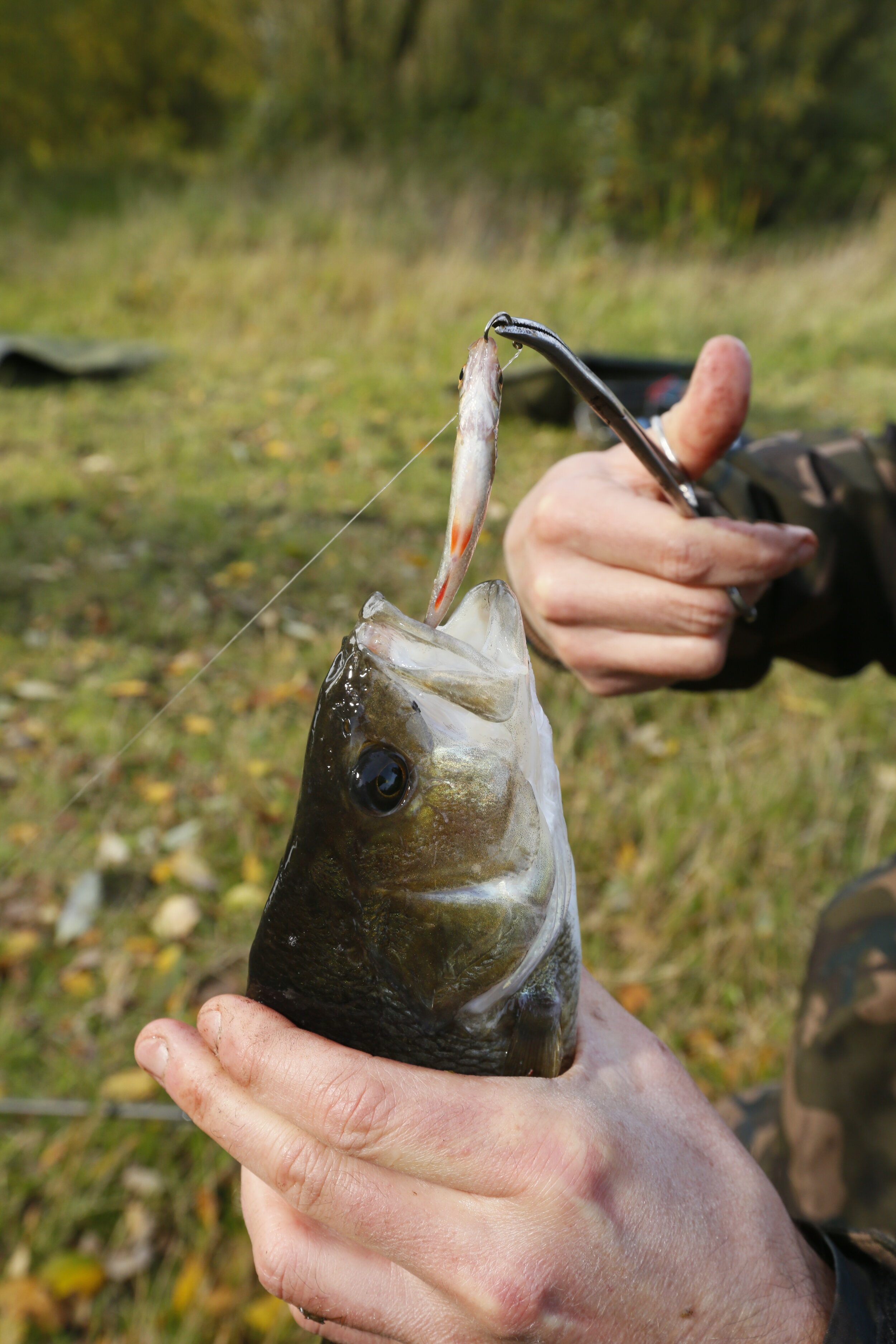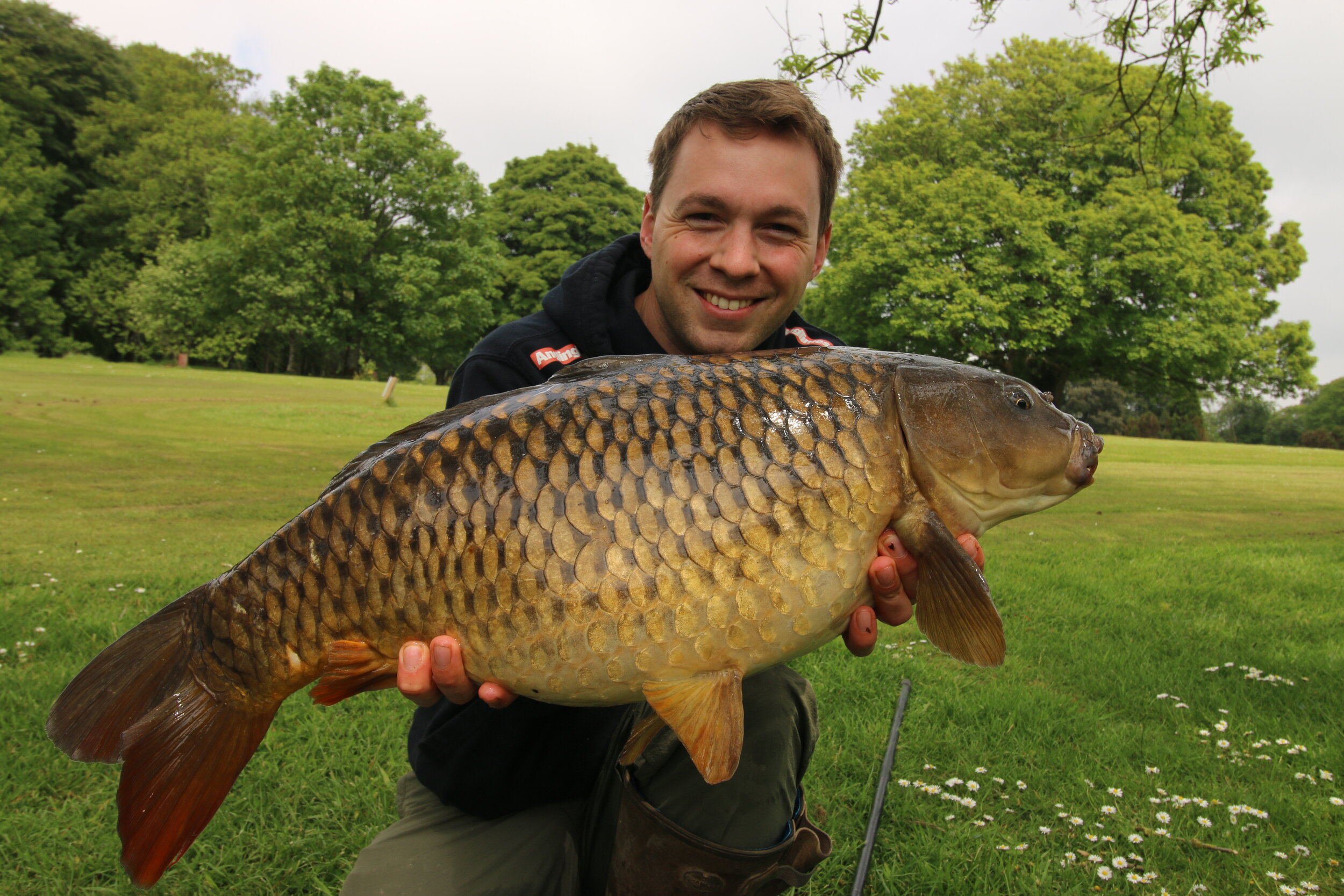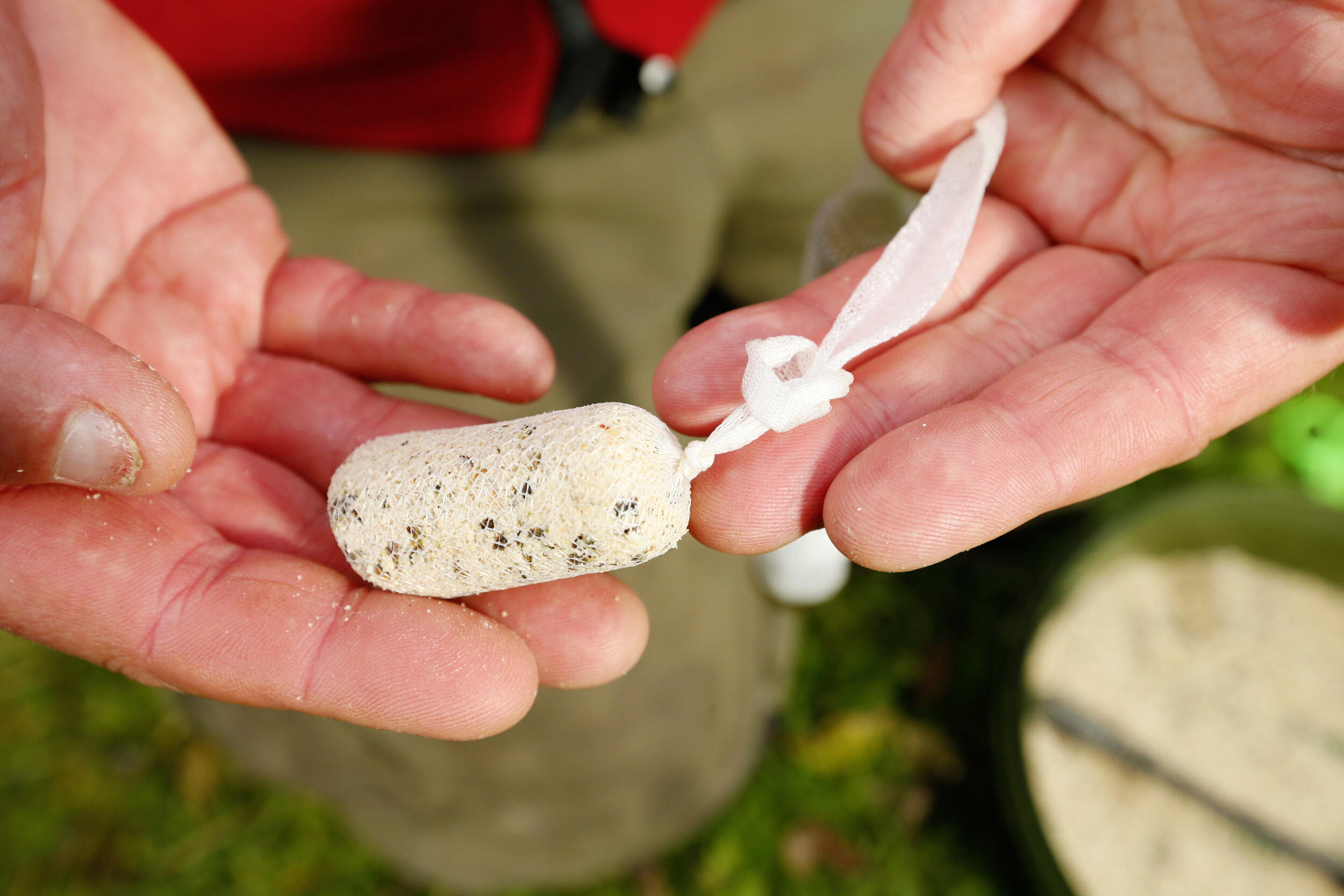Commercial Fishing Tips | Six tips to shallow up for silvers - Ricky Young
As long as the temperatures overnight and in the day stay settled, with no big drops, I’ll put my money on catching a big net of quality silvers by fishing off bottom, sometimes even properly shallow.
Fishing shallow can catch you quality nets of silvers
Here’s some tips to help you do the same…
GO FOR A LIGHT ELASTIC
Even if you hook a rogue carp, you can get it out using light elastic. The Browning Microbore orange grade I use is perfect – soft enough to land roach and skimmers without hook-pulls, but you can land a carp with a side-puller kit.
Big fish can be landed on light elastics
GREAT PRESENTATION
A light float allows the bait to fall through the water slowly and find the bigger roach. A homemade slim-bodied 0.2g float taking seven or eight No10 shot strung in the bottom half of the rig will get the job done.
A light float encourages a slow fall of the hookbait through the water
USE GROUNDBAIT
I’ll pot in three large balls of groundbait. This attracts and focuses the fish in a spot over which I can then fire casters. My mix is a split of Browning Black Roach, Quick Skimmer and Formula Fish.
Pot in groundbait to draw the fish in from the off
SWITCH TO MAGGOTS
Casters are always my choice for silverfish, but they can sometimes be too selective. Maggots are the great fall-back bait that can get a peg going again when it seems to have slowed up.
Maggots are a great change bait if bites slow down on casters
FEED A SECOND LINE
You won’t plunder one line all day, as the fish will eventually back off. This is where I have a second swim on the go, to target big roach and skimmers. I put this in at 6m but off to one side, and will only fish here on the bottom.
Feed another line to with to when bites slow up
FEED WITH A CATTY
While the weather remains mild, the fish will still be active. To catch off bottom, you need to keep loosefeeding casters. The regime is 10 casters fired in every time I drop the rig in and every 60 seconds when I’m fishing the close-in line.
Keep the feed going in
River Fishing Tips | How to set up a flat float - Darren Cox
The flat float rig
IT MAY look tricky, but setting up a flat float is easy once you’ve done it a few times.
On a river the idea is to present the bait well overdepth and completely static. That means plumbing up so there’s anything between 12ins and 24ins of line and the bait laid on the riverbed.
To do this, set up with a single large dropper shot under the olivette and put a clip-on plummet on the shot.
Plumb as normal so that this shot effectively ends up just off bottom with that long bit of line on the bottom below it. You can add a few small shot to the line on the deck if you want to make sure the bait remains totally still.
I’d shot the float to leave around half the bristle on show. When held back, the bristle will rise up slightly but without having any of the float body come out of the water. A 3g flat float will manage most situations but in very strong flows this could be upped to 5g.
Components
FLOAT - 3g Cralusso
LINES - 0.16mm Garbo Line fished straight through
SHOTTING - Fix the olivette 12ins away from a large dropper shot set just off bottom
DEPTH - Set the rig to be fished 2ft overdepth
HOOK Size - 13 Kamasan B711
HOOKBAIT - A whole worm or three or four dead maggots
Pole Fishing Tips | Set up to fish the long pole properly - Steve Ringer
WE ALL want to start fishing as soon as we can when arriving at a lake or river, but this rush to get set up can be detrimental for later in the session, especially when fishing the long pole. If you take your time to get organised properly, you’ll be more efficient and catch more fish!
This definitely applies to the long pole, a method that requires as much thought to how your seatbox and pole rollers are set up as it does to the rigs and baits on the other end. Fish with an uneven box that’s set too low down to the ground and it’s hard work.
Likewise, have your pole roller in the wrong position or at the wrong height and unshipping will become a real chore. Worse than that, you could end up breaking your pole. Getting set up properly is a good habit to get into and when done correctly, will allow you to become more machine-like with your fishing, working smoothly with everything in place and to hand.
If you take your time to get organised properly, you’ll be more efficient and catch more fish!
Get level!
Not getting your box level is a recipe for disaster and will give you backache! Make sure your feet are flat on the footplate and sit with your legs slightly to one side, resting the pole across your thighs. Your elbow will then rest on top of the pole.
Not getting your box level is a recipe for disaster and will give you backache!
How many rollers?
On flat banks, I’d use one roller for fishing up to 11m and two past this. If the bank behind you is steep, you can get away with one and use the bank as a second. I like to extend my roller legs fully so my rig is always in the water when shipping.
On flat banks, I’d use one roller for fishing up to 11m and two past this
Side tray height
Fix your side tray too low and you’ll always be reaching for feed or hookbaits, which will put you off balance. I want to simply reach off to one side and pick up bait or a catapult without taking my eyes off the float.
Fix your side tray too low and you’ll always be reaching for feed or hookbaits
Bump bars
These seem a good idea as they leave your hands free to feed. In windy weather they’re great, taking the strain of battling with 13m of pole off your back and also keeping the rig dead still. For pole fishing beginners, they’re a must.
For pole fishing beginners, bump bars are a must.
Carp Fishing Tips | Is a fresh low-pressure front really the best conditions to catch carp? - Simon Scott
This is a great question and one I’ve been asked before. The answer is closely linked to oxygen levels in the water.
In short, a big fresh low-pressure system which comes through during the summer, or winter for that matter, is often a trigger for enthusiastic feeding and high activity in fish stocks.
High winds will stir up the water column and lead to increased levels of oxygen in the water body which, in turn, switches the fish on to feeding.
If the low pressure leads to overcast or heavy grey skies and only light winds it’s less of a trigger for the fish to feed.
Bright sunshine can also trigger fish to feed because it can lead to increased levels of oxygen in the water. The sunlight drives the process of photosynthesis, so aquatic plants and algae produce more oxygen if the sun is shining brightly.
Keep an eye on the weather
Lure Fishing Tips | How to fish the Ned rig for perch - Ian Jones
There are a number of ways you can fish the Ned Rig but my preference is for the ‘twitch, twitch, pause’ technique. The secret to the success of this approach lies in the lures which are made from a buoyant material that makes the lure appear alive – especially when mounted on to a jig head and twitched along the bottom.
Most of the time I’ll cast my Ned Rig to the far bank, let it sink, then start the ‘twitch, twitch, pause’ retrieve. Every time you twitch the lure it kicks up dirt or silt which imitates a feeding baitfish and causes the perch to home in and investigate. When you pause the lure, the tail will waft enticingly upwards and I’ve found it’s at this moment when the lure is engulfed. It’s almost like feeder fishing because you can watch the tip pull round!
This technique has caught me countless perch from canals, rivers and stillwaters too.
The Ned Rig
How to do it…
The lure has remained on the bottom for several seconds without a take. Time to give it a twitch.
The twitch causes the lure to ‘hop’ across the bottom before settling again a few inches from its starting point.
Time to twitch the lure again. You might wish to vary the strength of the twitch so the lure behaves a little differently.
Continue the ‘twitch, twitch, pause’ sequence until you get a bite. Remember, with the Ned Rig you are just as likely to get a bite when the lure is stationary as you are when it’s moving.
Big perch love the Ned rig!
Commercial Fishing Tips | Catch more silvers on chopped worm - Steve Ringer
ALTHOUGH I think we’re past the window in the year when chopped worm works for big carp, where silverfish are concerned it’s still a vital bait to have to hand.
We all know perch love worms, but so do roach and skimmers. If I was fishing a venue with a real mix of fish in it, such as Lambsdown Lake at Meadowlands Fishery, worms would always play a part – not however, when fed on their own!
Instead, I try to combine worm with groundbait and other goodies like casters and dead pinkies. Few people can deny the pulling power of chopped worms. The juices that leak off pull fish in quickly, but this is a feed that you need to go steady with.
Feed too much and worms in cold water can put the fish off. By introducing only a small taster of finely-chopped dendra worms every time I feed on the pole, or cast a feeder, I’m in a position to work out how well the fish are responding, allowing me to increase or decrease the amount of feed.
Chopped worm is a vital bait for silvers in the colder months
RIDDLE OFF THE SOIL
I want worms soil-free. I’ll riddle off the bulk of the soil and then pop them in a tub. The worms will ball up, pushing off excess soil.
Riddle excess soil off your worms
MAKE A MUSH
How finely you chop worms is dictated by the size of fish I’m after. Big fish need a rough chop, but smaller fish need a minced-up mush.
For smaller silvers, try to create a worm mince
START WITH A PINCH
Bream love worms, but sometimes not in the cold. I’d start with just a pinch of choppie inside a ball of groundbait or in the feeder.
Just a pinch is enough to add attraction to groundbait
CHOP SOME CORN
I’m a big fan of the colour yellow for bream, so I’ll chop up some corn to add to the mix. This puts small flecks of colour into the swim.
Corn and worm is a deadly combination
River Fishing Tips | How to find barbel on a flooded river - Dai Gribble
In prolonged floods, barbel seem to gradually move out of the main flow into slower flowing water. I suspect this coincides with them having fed well and preferring to rest up in areas where they need to expend less energy.
Barbel will move away from fast flows in prolonged floods
This helps you locate the barbel as once the river has been in flood for a couple of days, they are more likely to be found in the classic flood swims where the flow is less than in the main river.
I’d look for the following:
Bends with slack water on the inside and a crease where the main flow passes by.
Cattle drinks where there is slow-flowing or slack water out of the main current.
Slacker water behind overhanging obstructions such trees.
Deep holes where the barbel can lie in slower flows beneath the main pace of floodwater.
Slacks downstream of large bridge supports.
Search out slacker areas of water for barbel in times of flood
Commercial Fishing Tips | Six tips to get the most out of soft pellets - Lee Kerry
It's time to make the seasonal switch to soft pellets! Here are six tips to get the most out of them…
SOAK THE FEED PELLETS
My No1 cold water feed pellet is a soaked 2mm. Referred to as micros, I soak mine heavily, submerging them in a Pellet Wetter for three to four minutes so they dissolve as the fish eat them.
2mm micros are a perfect winter feed
MIX UP HOOKBAIT SIZES
You can’t beat an expander pellet on the hook. A 4mm bait is the optimum size, but I have a mix of 3mm, 4mm and 6mm expanders on the go and change them depending on the size of fish I’m catching.
Carry a mix of expanders
HOOKING EXPANDERS
I like to thread the hook fully through the pellet, getting as much hook into the bait as possible. This makes it less likely that the hook will pull out of the bait when you strike or lift and drop the rig.
Try to get as much hook into the bait as possible
THE RIGHT RIGS
When fishing pellets, you need complete control of your bait. I use a maximum of a 4ins hooklength so that as soon as a fish picks up the bait, the bite registers on the float, even if the indication is tiny.
You need the bite to register on the float as soon as the fish picks up the bait
BALANCE YOUR KIT
The lighter the hooklength you use, the more bites you’ll get. I love the Preston Innovations 9h Hollo elastic, with a stiff mainline such as 0.18mm Accu Power, but hooklengths down to 0.10mm if required.
The lighter hooklink you use, the more bites you will get
THEY MIGHT NOT WORK!
Sometimes soft pellets won’t catch that well. If you’re on a difficult water, then soft pellets are a good choice. However, if you are getting lots of fish you don’t want to target, go for a hard pellet or corn.
If you are getting lots of bites from small fish, try switching to hard pellets or corn
Carp Fishing Tips | Why timing is everything - Julian Cundiff
Much is made of location, but it goes hand-in-hand with timing. Even if you are on them, if it’s not at feeding times you can end up very frustrated...ring any bells?
Until I retired in 2018, 80 per cent of my carp fishing was overnighters. When they were feeding after dark, bingo! When they were not, in all honesty, I was camping.
Find out when carp are being caught. Is it during the hours of darkness? If it is, it can often be in specific areas, so see if there’s a common denominator. If they’re coming out in the day then you need to be creative with your time and get yourself there at these times.
A short session at the right time is better than a longer one at the wrong time. At this time of year feeding spells will be shorter, so fish for a bite. Single baits, small mesh bags of crumb and stringers are all winners.
The feeding time was 4-7pm. So I turned up at 3pm, by 5pm I had caught this cracker
Feeder Fishing Tips | Why you need to hair-rig worms - Adam Wakelin
Hair-rigging makes the worms sit better on the hook and stops them folding over the hook on the strike, so there are a few good reasons to do it, especially at this time of year.
I fish a hair rig with a bait stop and thread on the worms with a baiting needle - it’s dead easy to master if you practise.
What size worm to use is the next decision. One or two whole dendras are great for big bream but, as things are going cooler, I scale back to two halves or sections of worm.
Hair-rigging worms stops them folding over on the strike
River Fishing Tips | The best way to attach a PVA bag when barbel fishing - Jamie Cartwright
The best way I’ve found is to thread the PVA bags directly on to the hooklink using a long baiting needle.
I use a quickchange swivel and tie a loop in the end of my hooklink, which allows me to quickly take off the hooklink, thread on a bag of pellets and boilies and slide it down so it rests against the hook, then reconnect the loop to the swivel.
I use a lead clip arrangement when using mesh bags. A running lead can slide back up the line and you get too much separation between the lead and the bag, making casting difficult.
This is a vast improvement on just nicking a bag on to the hook, as more often than not the first part of the PVA to melt is the bit attached to the hook, and the bag can just roll away!
Threading a PVA bag down the hooklink is a reliable way to present loosefeed when barbel fishing
Commercial Fishing Tips| Six steps to November success with Tommy Pickering
WATCH THE CLOCK
I always keep an eye on my watch but timings aren’t set in stone. I’ll want to catch on the feeder and long pole for the first half of a session then, with three hours to go, move to the 6m line and then the margins.
Start long and come short
FEEDER OR BOMB?
I’ll always begin on a small Hybrid feeder with micros cast to an island, to a distance where I can loosefeed pellets comfortably. If the feeder is slow I can then change to a bomb, and still feed the swim.
If the feeder is slow, switch to the bomb
DROP FEEDER SHORT
A Method feeder on the short pole line can be deadly when the lake is towing hard or if I’m getting liners from fish coming off the bottom. The rod you’ve used to cast to an island or open water will do nicely.
Don’t be afraid to drop the feeder short
ALWAYS USE A POT
Once I drop a rig in, I change from hand feeding to a small pole pot. This way I can line the fish up where I want them. Normally I’ll be feeding 4mm pellets, but micros also work if the peg is shallow.
Deliver feed with a pole pot
BRIGHT HOOKBAITS
If I’m not catching well, my first action is to change to a bright hookbait. Fjuka Neeonz are brilliant and I’ll use yellow or white for clearer water, pink or orange for coloured lakes.
Bright hookbaits will buy you extra bites
ACCURATE FEEDING
For accurate grouping, cup your hand with the feed almost on your fingertips. This way there’s no spread of bait – do it with a more open hand and it’ll go everywhere!
Accurate feeding is vital
Commercial Fishing Tips | Catch a big weight of perch with Steve Ringer
Over the last few years, one fish that’s really come to the fore on commercial fisheries up and down the country is the perch.
And I’m not talking about just catching the odd one either because weights in excess of 50lb of perch have been caught on some waters. That’s exceptional fishing in anyone’s book. In fact, big perch have become so important on some lakes that they have acquired their own nickname of MVPs (most valuable perch)!
That’s certainly true in matches when the carp aren’t really feeding and five or six big perch for 10lb-plus can make a big difference at the final whistle, but for pleasure fishing, I think targeting perch can be even more rewarding.
They grow to quite a fair size and can be caught on relatively simple tactics too, so there’s no need for you to break out the specimen-hunting gear to have the chance of netting a 2lb-plus fish!
When the carp aren’t really feeding, five or six big perch for 10lb-plus can make a big difference
Fish the margins
The best place to target perch on commercials is in the margins. They love to patrol the edges, and if your margins have a feature such as an overhanging tree, that’s even better. You want to be fishing in 3ft of water to catch large numbers of perch. In fact, the deeper the edge is, the better it will be.
The best place to target perch on commercials is in the margins
Top perch baits
Worms are a good bait for perch, but once the water temperature drops, maggots and casters are better. Double maggot is a decent-sized hookbait, and when the water is clear fishing one white and one red maggot makes a huge difference. The white maggot definitely gets you more bites.
Double maggot is a decent-sized hookbait
Strike hard!
Big perch have very hard, bony mouths. Setting the hook when perch fishing is key, so I use a slightly heavier elastic, Orange Hydro. You need to strike firmly – a gentle lift won’t cut it! You also need to be patient when the float goes under. Try and wait that extra second before striking.
Setting the hook when perch fishing is key
Feeding tips
Little and often is usually best, but I’ll try and give the fish an hour to settle. Starting feed is 10 to 15 maggots or casters every 90 seconds or so, which I then adjust accordingly once I’ve made the switch. If there are lots of small perch, I’ll up the amount I’m feeding to draw in some bigger ones.
Up the amount of feed to draw in some bigger ones
Specimen Fishing Tips | Live or dead baits for big perch? - Rich Wilby
Big perch, especially in waters that contain no pike, live on small fish, making these a very selective bait.
Perch get big from a diet of small fish
On most venues where the method is permitted, a small livebait around 4ins long is a superb perch bait.
The perch paternostered float live bait rig
By comparison, deadbaits often – but not always – come in a poor second.
That said, lip-hooked deads fished ‘sink and draw’ style can produce the goods on some days.
I’d always go with a livebait where allowed, though!
Livebaits are the number 1 bait for big perch
Feeder Fishing Tips | 5 tips for bream on the feeder
Milder weather means one thing – bream! There’s no better way to catch them than on the feeder!
Vary the feed
Once you start fishing, try to judge how many fish are in the peg by the bites or indications you’re getting. If that’s not very many, it may be worth cutting back on the number of freebies going in through the feeder. There’s no point piling in more and more bait when there aren’t many fish there in the first place.
Let the fish tell you how much to feed
Big hits of bait
Making several quick casts at the start of the match will get some bait into the peg, but don’t bother doing it with the feeder you’re going to be fishing with – these are too small and will take too long. Instead, invest in a baiting-up feeder with a much bigger capacity. Between six and eight loads of bait are ample, using groundbait and a scattering of casters, dead maggots and pinkies, finely-chopped worm and a few bits of corn.
Baiting up feeders are a good way to kick off the swim
Watch the clock
Top bream anglers will always have a stopwatch by their side to time how long each cast is left out in the water. This is to try and work out when a bite is likely to come – if, for instance, you are getting most of your bites within 10 minutes, there’s little point in leaving the feeder out for longer than this.
Time how long you leave the feeder in
Redworms are autumn kings
Worms will still work their magic at this time of year, but on tricky venues it’s worth sourcing some redworms for the hook. These tiny worms are loved by bream, especially skimmers, despite their smaller size. Two or three fished on the hook make a brilliant bait, tipped off with a dead red maggot.
Redworms are a deadly bream bait
Add some colour
In clearing water, certain colours of bait and feed work really well for bream, with yellow the best of them all. Corn or a small yellow wafter or boilie catch loads of fish and you can also pep up your groundbait by adding Pastoncino. These small pieces of biscuit come in bright yellows and reds and just a handful stirred into mixed groundbait puts lots of little flecks through the feed for the fish to pick out when feeding.
Adding some colour can really boost results
Carp Fishing Tips | Go carping on a budget! - Chris Haydon
CARP fishing can be a seriously expensive business at times.
Buying a decent amount of boilies, a ticket for your local bag-up water and all the components to tie the latest rig – it all soon adds up. Fear not, though, as there are numerous things you can do to save a few bob, without compromising your catch rate.
Here’s how to do it...
Going carp fishing doesn’t always have to mean spending lots of money
Get on a club water (£30-£150 per year)
Day-ticket venues may hold some giant carp but they’re often busy, and if you fish them regularly you’ll end up spending a small fortune on tickets. So, why not check out the quieter club waters?
Many annual club books will only set you back the price of a long session on a day-ticket water, and they often hold carp of equal quality. The banks will be a lot quieter too!
Club books are great value for money
Use the ‘golden grains’... (As little as £1 per kilo frozen)
When used correctly, sweetcorn can out-fish all other baits. It’s widely used in spod mixes, but not on the hook for some reason, making it a bit of an ‘edge’. You can feed a lot of it too and it won’t fill the carp up. In fact, the more the better – they love it!
Sweetcorn is a deadly bait for carp. It’s cheap, highly visible and easily digestible
Ready, set, GO! (£1.99 per rig - cheaper options available too)
We all have shedloads of end tackle in our bag which, if we are honest, we hardly use.
If you are going to try a new rig, buy a ready-tied version first to test it out. All the major brands make ready-rigs now and it not only saves time, but also money on components you may never use again.
Ready-rigs are a quick and easy solution to test the latest wonder rig, without forking out on expensive components
Make a little go a long way (1kg of boilies = £9.99 - £12.99)
There is no denying that some of the boilies on the market are phenomenal fish-catchers, but that doesn’t mean you need to pile in kilos of them. Make your boilies go further by using halved baits. Simple!
Chop those boilies to put more baits out in the swim and let their attraction leach off quicker
Cook your own particles (£30 for £25kg from most pet food suppliers)
Bulk-buying raw particles such as hemp, pigeon conditioner or maize is an excellent way to save money. The baits must be soaked for at least 24 hours and then cooked until they split, so they are safe for the carp to eat. You can also add all kinds of ingredients to spice them up. A real no-brainer in the cost-cutting stakes.
When done correctly, cooking your own particles is a real money saver
Lavish TLC on your hooks (Hook file from £4.99)
Just because a hook on a rig has gone blunt, that doesn’t mean it deserves the bin. A little TLC with a hook sharpener should bring it back to life, saving you cash in the process.
Hooks can be brought back to life with a little touch up
Try bread bags (£1 a loaf, will last you a session)
Breadcrumbs in a mesh bag make a great alternative to pellets or boilie crumb. Combine them with a bright pop-up for a real cost-effective winner in the colder months.
Bread crumb in PVA bags is a deadly winter tactic, when minimal feed is required to get a bite (Photo - Mark Parker)
Use fantastic foam! (From £3.99)
When the air pressure is high and carp are up off the bottom, zig rigs can be deadly.
Other than a hook and hooklink, the only thing you need to get a bite is coloured foam. You can flavour it if you wish, but unflavoured foam has taken some of the biggest and best carp in the country, crazy as it may sound.
Foam has caught some on the country’s biggest carp (Photo - Matt Woods)
Recycle your old rigs (FREE)
At the end of a session, don’t just cut off your rig and dump it in the box. Snip off the hooks, swivels and rig sleeves and use them again.
Reverse your mainline (FREE)
Instead of respooling each season just reverse the line on your reels by loading it onto a spare spool, and then pop the spare spool back onto your reel. The used line will then be on the bottom, and fresh stuff on top.
No need to throw away fresh line, just reverse it onto your spare spools
Fish dawn to dusk (FREE)
Night fishing means buying a bivvy, bedchair and sleeping bag. Instead, get up early and to the lake before first light. The fish generally will be showing, and you can jump right on them while everyone else is snoring!
Night fishing can often be unproductive on some waters, just get up early and stay late
Buy cheap, buy twice! (PRICELESS)
Make savings elsewhere, but it’s vital your rods and reels are up to the job. See if your local tackle shop will do you a deal. You only need two rods. You will then only need two alarms, two sets of sticks and a two-rod licence too. Big savings!
Having good quality rods and reels will ensure you land more fish. You only need TWO!
Commercial Fishing Tips | Time to get the most from natural baits - Ian Chadburn
In an age of pellets, paste and wafters on commercials, it’s easy to leave good old maggots and casters in the tackle shop fridges for the river and canal anglers. After all, maggots only attract little fish – and who wants to catch those?
As we start to experience colder weather, the answer to this question should be ‘everyone’. We can all recall days out when the carp haven’t played ball and you come off the bank with little to show for your efforts using baits like pellets.
Natural baits will still catch plenty of carp
As the weather and water cool, fish don’t feed as strongly or for long periods of time. This means you’re left with long gaps between bites, gaps that can easily be filled by adopting a natural bait approach with maggots and casters.
There’s not a fish swimming that won’t eat maggots, so you can never be sure what you’re going to hook when the float goes under. The natural route shouldn’t be limited to just maggots and casters either – worms and hemp also work.
Slow periods can be made busy with natural baits
Use groundbait
Keep one line reserved for big fish, feeding it with groundbait and corn. Depending on the depth, feed the groundbait either loose in shallow water with a silty bottom, or as a ball in deeper pegs with a hard bottom.
Groundbait should be fed on the big fish line
Catch them all
While you let the big-fish lines settle, fish for bites with maggots. These could be from a 2oz roach to a 10lb carp just 5m or 6m out. Throwing in around half-a-dozen maggots every drop-in will keep a steady stream of bait going in.
Keep feeding maggots in close to keep action coming
Little & large floats
On the maggot line, a slim float taking around 0.4g will let you fish with the bait falling through the water. On the long pole, big-fish agenda, this is upped to a 0.6g rugby ball-shaped pattern for stability.
Have several rigs ready
The baits to use
All you need are maggots, casters, worms, hemp and corn. Maggots, casters and worms are the main hookbaits, hemp and corn coming into play as feed. A couple of pints of each will be ample.
A selection of natural baits
Fish the margins
Until the first frosts strike, the margins are a great place to catch later in the day. Forget about finding 12ins of water... 2ft 6ins-3ft is what you’re after. Depth is more crucial than cover from reeds and lily pads.
The margins will still produce until the first frosts
Use your time wisely
Treat the big-fish lines as somewhere to have a look at now and then. The maggot line will be where you should spend most of your time. A maximum of 10 minutes is all you need on the big-fish lines.
Don’t spend too long waiting for bites on the big fish line
Commercial Fishing Tips | Sort your shotting with Steve Ringer
Shotting patterns – now there’s a topic you could argue about long into the night! What’s best for deep-water bream? What about the margins, or fishing up to an island?
I get asked questions about this a lot and it’s always hard to answer because the key lies in responding and altering your shotting to how the fish are feeding.
Some days, a straight bulk and two droppers pattern will be best while on others, spreading the shot out for a slower fall catches more. There’s no right and wrong answer and my biggest bit of advice would be to experiment. If you’re not catching as well as you’d like, slide the shot about to see if it makes a difference!
That said, for much of my fishing, whether on a commercial carp fishery or an Irish lough, I have two patterns that have served me well for years – the strung bulk and the straight bulk. I love using a strung bulk due to its versatility, as it allows me to change from quite a positive way of presenting the bait to a more refined one simply by moving the shots further apart.
The key lies in responding and altering your shotting to how the fish are feeding
Tailor your weights
For floats of 1g and upwards, use an olivette and below this, shot. A 0.8g float may seem to need too many shot and risk tangles, but that won’t happen if you use bigger-sized shot.
For floats of 1g and upwards, use an olivette
Shot sizes to use
When using rigs of 0.6g to 0.8g I’ll use No8 and No9 shot. For rigs below 0.6g I’ll use No10 and occasionally No9s. Lighter floats let you present the bait falling more slowly through the water.
Carry a variety of shot with you
Versatile pattern
I rate a strung bulk pattern. This consists of shot spaced 1ins apart in the bottom half of the rig. I space the shots further apart for a slower fall of the bait or create a bulk if I need it to get down quickly.
Strung shotting aids a slow fall of the hookbait
A solid bulk
Solid bulks tend to be an olivette for bream rigs, and are fished with two or three dropper shot below it. If I’ve got only shot on the line, I’ll group it together for fishing in the margins.
A bulk will help get the bait down quick for species like bream
Commercial Fishing Tips | How to hit more bites from F1s - Reece Hearn
I catch a lot of F1s in the cooler weather just as the bait settles, and in clear water I think that the fish actually watch the bait fall, so how you present the hookbait will go a long way to deciding many you actually hook.
I try to bomb the rig down towards the bottom as normal but then stop the fall with about 12ins of the rig sticking out of the water to let the rig straighten up.
I then slowly lower in the rest of the rig to give the bait a super-slow fall in the bottom foot of water.
I’ll also lift and drop the rig the same distance when fishing to keep the pellet falling in front of the fish. Try this and you’ll hit more bites!
F1s will watch the hookbait fall
Canal Fishing Tips | Should you loosefeed over groundbait? - Matt Godfrey
On the deep shipping canals of Yorkshire that I fish, loosefeeding over the top of groundbait actually defeats the point of what I’m trying to achieve. I want the fish to be firmly on the bottom, feeding on the groundbait and giving me a focal point over which to put my rig.
Firing in casters or maggots runs the risk of spreading the fish over a wider area and even coming off bottom, so I wouldn’t use a catapult at all. Instead, I’ll cup in two to four balls of groundbait, the amount depending on how many fish I feel are in the area and how good the peg is, topping up with a ball the size of a large walnut when bites fade or I begin to catch small fish.
On deep canals a groundbait only approach is the way

